The visit of the huge Russian delegation to Iran, which came as a sequel to Iranians’ visit to Moscow in February, is promising of stronger commercial relations between Tehran and Moscow.
Iran and Russia enjoy age-old strategic and irrevocable relations in the international and regional levels though their collaboration has been more of a political nature than an economic one.
In other words, Russia remains as Iran’s most important political partner though the two sides lack appropriate trade and economic ties hence the efforts in recent years aim to find venues for expansion of economic collaborations between the two parties.
The need for closer economic ties between the two countries was better felt after the European Union (EU) imposed sanctions against Moscow and it was when Russian traders voiced eagerness for cooperation with Iran’s private sector though certain barriers, including high tariffs and lack of familiarity with the Russian market, prevented elevation of trade ties between the two parties.
With Rouhani having assumed the power, there has been a giant leap forward in bilateral trade and economic ties between Iran and Russia which culminated since then; both countries saw a low point of a little more than 1 billion dollars in 2013.
Meanwhile, the volume of bilateral trade between Tehran and Moscow is still standing at the very small figure of 1.5 billion dollars, a figure which has remained constant due to trade and banking barriers.
Iranian and Russian senior officials, including President Hassan Rouhani and Vladimir Putin have repeatedly emphasized the fact that expansion of ties between Tehran and Moscow plays an important role in ensuring regional peace and stability.
Nevertheless, recent commutes between the two sides are indications of a joint effort by Tehran and Moscow to bolster commercial relations as they are experiencing an unparalleled period of time of their relations.
It could therefore be inferred that both sides, in addition to strengthening of ties to fight with non-regional powers and certain regional states who have threatened stability in the region by shaping and supporting terrorism, are after reinvigoration of economic cooperation between one another.
Russia has on agenda to accelerate its trade cooperation with Iran and to raise the trade volume to annual staggering figure of 4 billion dollars. Experts in Moscow would see that prospect bright, since Iran provides low-cost transportation which is at the same time diverse.
In line with the recent efforts to bolster bilateral relations, a Russian delegation, comprising numerous people from 180 firms, arrived in Tehran to conduct face-to-face meetings with state and private sectors of Iran.
The presence of Russia's biggest trade delegation in Iran targeted to increase the level of trade turnover between the two countries to 10 billion dollars.
Vice Chairman of Iran-Russian Chamber of Commerce Ghadir Ghiafeh said the delegation was visiting Tehran in the form of a joint commission on economic, cultural and scientific cooperation between Iran and Russia; “the commission aims to boost ties with a panel of private and state sectors while specialized committees will be in charge of investigating various subjects,” he had noted prior to the visit.
Russians had identified Iran’s capacities in different areas as regards meeting their demands and the visiting board sought to find trade partners and launch cooperation on technology transfer.
A relevant conference was also held at presence of 500 to 600 Iranian economic activists to discuss venues for reinvigoration of ties between the two sides.
The parties also touched upon issues like oil, gas, petrochemical and financing of projects in addition to looking for solutions to banking issues as the main obstacle to development of bilateral cooperation.
While calling for formation of broker relations between banks of each other, Tehran and Moscow also touched upon non-oil exports by exchanging views between Iranian and Russian authorities.
“Russia enjoys excellent capacities in various economic sectors,” stressed vice chairman of Iran-Russia Chamber of Commerce saying that share of Iran in Russia’s import volume stood at the negligible figure of 350 to 450 million dollars.
He maintained the Iranian traders lacked proper familiarity with the Russian market urging state and private sectors of both sides to spare no effort in introducing their potentials.
Ghiafeh recalled that volume of trade turnover between Tehran and Russia has become eightfold in the current year though the figure is still considered as insignificant.
The official further underscored that currencies of both countries were affected by global market which made it difficult to use local currencies instead of dollar for monetary transactions.
The recent visit also led to signing Memoranda of Understanding (MoUs) in numerous fields including commerce, gas in addition to removal of exports tariffs for 24 categories of commodities which will greatly assists Iranian traders.
The Iran-Russia Economic Commission mainly addressed effective implementation of Putin-Rouhani strategy to boost bilateral trade.
The 13th joint commission, which was unprecedented in recent years by Iran and Russia, was headed by Iran’s Mahmoud Vaezi, Minister of Information Technology and Russia’s Minister of Energy Alexander Novak who arrived in Tehran on Sunday along his entourage, among whom were important entrepreneurs.
Russian quota in the economic commission was 270 participants and a workgroup was in charge of addressing issues in energy and telecommunications, new opportunities in sectors, and implementation of past agreements. Prior to the event, Iran’s Ambassador to Moscow Mehdi Sanaei had already negotiated with Novak construction by Russian contractors of Bandar Abbas thermal power plant worth €1.29bn, along with other projects which included metrology, standardization, good quality assessment, and other projects of private sector.
Tehran session also sought to make efficient the legal and official frameworks of bilateral cooperation; on the sidelines of the event, a 1-day session of tradesmen and heads of 200 companies was held, where Russia participated with 320 members, which turned the session into the greatest ever such congregation of businessmen in the history of bilateral relations.
All in all, the most considerable outcome of the joint session was signing of nine joint cooperation agreements in a wide variety of areas between Iran and Russia.
The agreements were sealed by Iran’s Mahmoud Vaezi and the Russian Energy Minister Alexander Novak as heads of the 13th Joint Economic Commission between the two countries.
Insurance, banking and finance
Accordingly, two cooperation documents were inked between Export Insurance Agency of Russia (EXIAR) and Iran’s private sector. Additionally, another MoU was signed between Institute of Standard and Industrial Research of Iran (ISIRI) and Federal Agency for Technical Regulation and Metrology of Russia.
National Iranian Gas Company (NIGC) and Russia’s Gazprom also hit an accord aimed at bolstering cooperation in gas industry. Moreover, three compacts were formed between Iranian and Russian industry ministers over expansion of the industrial roadmap between the two parties.
Other deals were inked between Joint Business Councils and Chambers of Commerce of Iran and Russia as well as one which aimed to finance Iran’s thermal power plant projects.
Also on the sidelines of the 13th joint commission, Memoranda of Understanding (MoUs) were sealed to finance electrification projects in Garmsar-Incheh Borun railway.
The final accord between Iran and Russia pertained to the MoU of the 13th Joint Economic Commission between the two countries which were signed by Iran’s Vaezi and Russia’s Novak.
Yet, oil industry had the lion’s share during the visit by Russians since joint session also established the first ever joint energy commission to bolster ties in the energy sector.
Indeed, Iranian Oil Minister Bijan Zanganeh and Russian Energy Minister Alexander Novak began their meeting behind closed door before the economic mission officially got underway.
Oil contracts
During a follow-up press conference, Iran’s Oil Minister Bijan Zanganeh reported on signing research and development MoUs with Russian firms like Lukoil, Tatneft, Zarubezhneft and Gazprom for expansion of seven Iranian oilfields including Mansouri, Ab Teimour, Aban, West Paydar, Dehloran, Cheshmeh Khoshk and Chenguleh.
The documents cover the cooperation in oil exploration and extraction, the development of oil fields, petrochemical production swaps, gas deliveries cooperation and cooperation in the sphere of oil facilities production technologies.
He also appreciated Russia’s constructive role in the recent OPEC meeting saying “the accord between OPEC and non-OPEC producers holds greater significance than figures or numbers since it leads to a healthy and balanced market, a fact which has been realized by the market.”
Zanganeh voiced Iran’s readiness to launch cooperation with Russian oil firms adding “development of oil fields and boosting recovery factor remain as main axes of negotiations with the Russian side.”
The official emphasized that Iran sought to assign developmental projects for seven oilfields to Russian companies; “so far, Memoranda of Understanding have been signed with several companies on development of seven Iranian oil fields.”
As regards banking cooperation, several commission meetings were conducted during the Russians’ stay in which barriers were dealt with and future plans were talked over and good agreements were fortunately reached as evidenced by two banking documents which were inked.
Accordingly, foreign branches of banks will be established in both states in a bid to overcome one major issue faced by traders, which is absence of broker relations between Tehran and Moscow in addition to the fact that banks of each side had no branches in the other country.
Nevertheless, the issue of replacement of dollar with rial and ruble was also raised during bilateral negotiations though the currency replacement initiative demands certain mechanisms and despite the overall agreement, the process will continue until it becomes finalized.
On this topic, Novak said central banks and monetary institutions of the two countries have paved the path in this regard and money transfer is being performed.
Russian energy minister recalled that 10 major banks of Iran and Russia had embarked on the project as well as that a team was put in charge of tackling existing banking difficulties.
Also, both parties agreed that tariff obstacles in exports of goods to Russia faced by Iranian businessmen will be abolished once free trade agreement between the Eurasian Economic Union and Iran becomes finalized. Presently, export tariffs for 24 types of commodities have been removed paving the path for exports to Russia.
Other trade-related agreements between the two sides pertained to launching of customs green corridor, facilitation of visa issuance, resolving legal and banking issues, sealing MoUs on large-scale projects like to construction of Boushehr Power Plant and electrification of Iranian railways as well as allocation of a 2.5-billion-dollar credit to proposals.
Aviation industry
Negotiations are also underway on sales of Sukhoi Superjet 100 (SSJ100) aircraft to Iran. The plane enjoys a special technology as it has been manufactured in partnership with several European companies like Italy and France.
Sukhoi Civil Aircraft Company (SCAC) had previously announced readiness to sell SSJ100 aircraft to Iran affirming “in case a sales contract is inked, the possibility for Iranians to enter the production process will be investigated.”
Nevertheless, Russia cannot be the final decision maker on sales of Sukhoi Superjet 100 to Iran though Russian media has announced earlier that Tehran and Moscow have reached primary agreement in the course of SSJ10 talks.
Agricultural cooperation
Russia is one of the suitable and huge markets for Iran's agricultural products though grounds for elevation of exports of these products had not been prepared due to trade, economic reasons as well as structural weaknesses.
Other influential factors in this regard, in addition to trade costs, included economic and financial obstacles like banking issues as well as currency rate fluctuations. Along with trade and economic variables, poor logistics, lack of institutions or structured and systematic trade organizations have been among other problems on the path to commercial success in global markets, including Russia.
Nevertheless, the opening of a new chapter in cooperation between the two major regional countries seem to gradually alleviate obstacles leading to increased collaboration between Tehran and Moscow.
The issue is being followed up by Iranian and Russian officials and businessmen as they possess strong determination to surmount obstacles and it is hoped that recent measures would trigger further economic activities.
Outlooks
To recapitulate, in its recent visit to Iran, the Russian delegation signed nine agreements in industries ranging from energy to railways. Upon arrival in Tehran on December 18, Russia’s Energy Minister Alexander Novak outlined Moscow’s ambition to become a major investor in the Persian Gulf nation.
Later on Tuesday December 20, while speaking during one of many signing ceremonies, Novak said his country’s priority was to develop Iran’s big projects; “these agreements will have a significant influence on the relationship between our two countries,” he underscored.
It needs to be recalled that following the removal of international sanctions against Iran in January, countless economic delegations have visited Iran, which possesses a 400-billion-dollar economy. Yet, several international firms have abjured from inking final contracts with Tehran mainly due to the fact that certain sanction-related barriers are still force giving rise to hesitation of eager foreign parties who are also unsure about outcomes of Iranian elections in May.
Russian investors however seem to have an easier task for entering the Iranian market than European rivals like the UK, France or Germany since Russian banks are less affected by persisting US sanctions against Iran.
Iran has also nearly reached pre-sanction levels in crude oil production and exports following implementation of the Joint Comprehensive Plan of Action (JCPOA). During a recent OPEC meeting, which ended in the agreement to cap oil output in a bid to bump up falling prices, Iran was given the authorization to go against the stream and increase its output by 90,000 barrels per day to a maximum of 3.8 million barrels per day as of the beginning of 2017.
Therefore, Iran has been looking for credible partners among international oil companies in order to develop oilfields and shore up production. Although agreements have been signed with Royal Dutch Shell Plc. and Total SA on development of several Iranian oil and gas fields, Russia also, during the recent visit, managed to secure a considerable place in developmental projects of the Iranian industry.
Finally, all the preliminary deals inked between Iran and Russia in energy, trade, finance, industry, mining and agriculture fields could end up in final contracts worth 10 billion dollars, an aim which is being seriously pursued by both sides.
HA


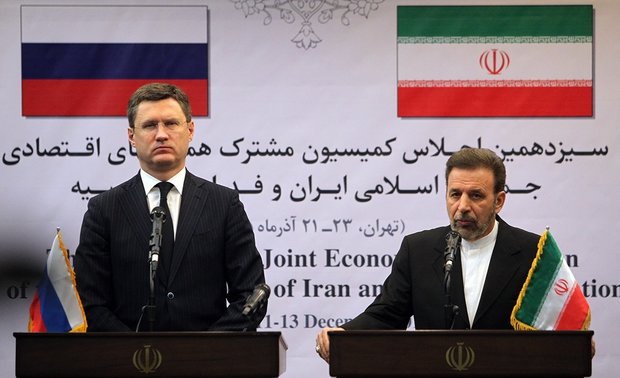



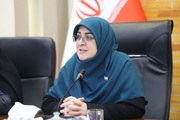
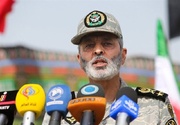
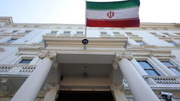
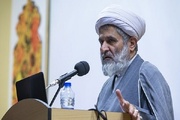
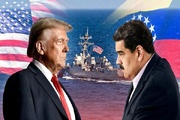
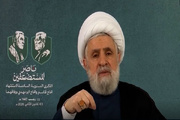










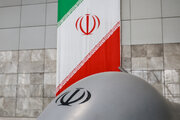
Your Comment